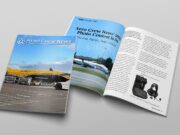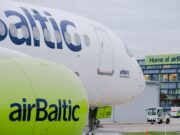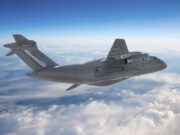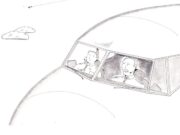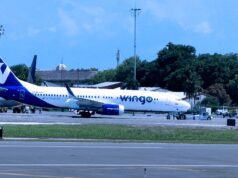
I grew up in the divided city of Berlin during the 1960s and 1970s. I was always intrigued by the story of the Airlift – the story of my city being supplied by airplanes landing every three minutes, bringing food to its people. A city isolated from the world by the Soviets and left to submit to communist rule or starvation. Growing up during the Cold War in a city enclosed by a wall, I experienced firsthand the lasting impact of the events that unfolded in the aftermath of World War II.
In a time when we are divided over many issues, I feel a strong desire to share the story of the Berlin Airlift because I feel we can learn so much from it. As this year marks its 75th anniversary, I decided to put pen to paper and wrote Wings of Freedom – The Story of the Berlin Airlift.
Without the efforts and contributions of the men and women of the 1948-1949 Berlin Airlift, the course of history would have taken a vastly different direction.
Let’s go back in time together . . .
Germany in 1945
At the end of World War II, the victorious Allied countries divided Germany into four zones of occupation. The USA, Great Britain, and France occupied the western zones and the Soviet Union the eastern zone. This division of Germany was supposed to be temporary, but the Soviet Union and Western Allies had vastly different visions for Germany’s future. While the Western Allies sought to rebuild the country’s economy and introduce a democratic form of government, the USSR aimed to spread communism throughout Germany and Europe.
Berlin, Germany's capital, 110 miles inside the Soviet zone, was also split, and people referred to the divided city as West Berlin and East Berlin.
The powers agreed that each would supply its own zone of occupation with the necessary supplies to feed the people and rebuild. This meant the Western Allies had to transport all supplies for their sector of West Berlin through the Soviet Zone of occupation.
In the fall of 1945, the Allied Control Council addressed aviation security in the Soviet occupation zone, resulting in a signed agreement for three restricted flight corridors from West Germany to West Berlin. In contrast, access to the Western Allied sectors of Berlin by land and water was never formalized in writing.

The Blockade
The Soviets wanted to dislodge the Western allies from West Berlin and used threats, propaganda, and confrontational tactics, to no avail. Thus, in a dramatic effort to put pressure on the West, the Soviets cut off access to Berlin. Just after midnight on June 24, 1948, citing “technical difficulties,” they cut the power supply to West Berlin. They began dismantling railroad tracks and closed the Autobahn “for repairs,” thus effectively sealing off all access by land. Closing the waterways further isolated the city from the rest of the world.
For over three years, the people of Berlin had lived on the precipice between survival and famine. By mid-1948, the effects of hunger and malnutrition had taken a toll on the health of 70% of the city's inhabitants, especially its children.
Berliners were restricted to using 25 minutes of gas a day from a single burner. Households were granted four hours of electricity, divided into two-hour intervals during the day and the night, supplied to neighborhoods on a rotating schedule.
The blockade shattered any hope Berliners held for a brighter future. As a result of the blockade, 2.5 million people in West Berlin faced immense challenges, including severe shortages of supplies essential for their survival. As it was, stocks of food would last no more than a month. But what West Berliners feared even more than hunger was a Soviet takeover.
Difficult Decisions
While Berliners faced hunger and uncertainty, the Western Allies had limited options to respond to the Soviet blockade. Withdrawal was not one of them as it “would inevitably entail a surrender of all of Germany and of Europe,” warned The New York Times.
“We shall stay. Period,” declared U.S. President Harry S. Truman.
Military action was too risky. Negotiations with the Soviets continued to fail. Imposing a counter-blockade would worsen the suffering of the already-beleaguered citizens. Ultimately, the Western Allies opted for a daring and unprecedented approach – to supply Berlin by air, thereby circumventing the Soviet blockade.
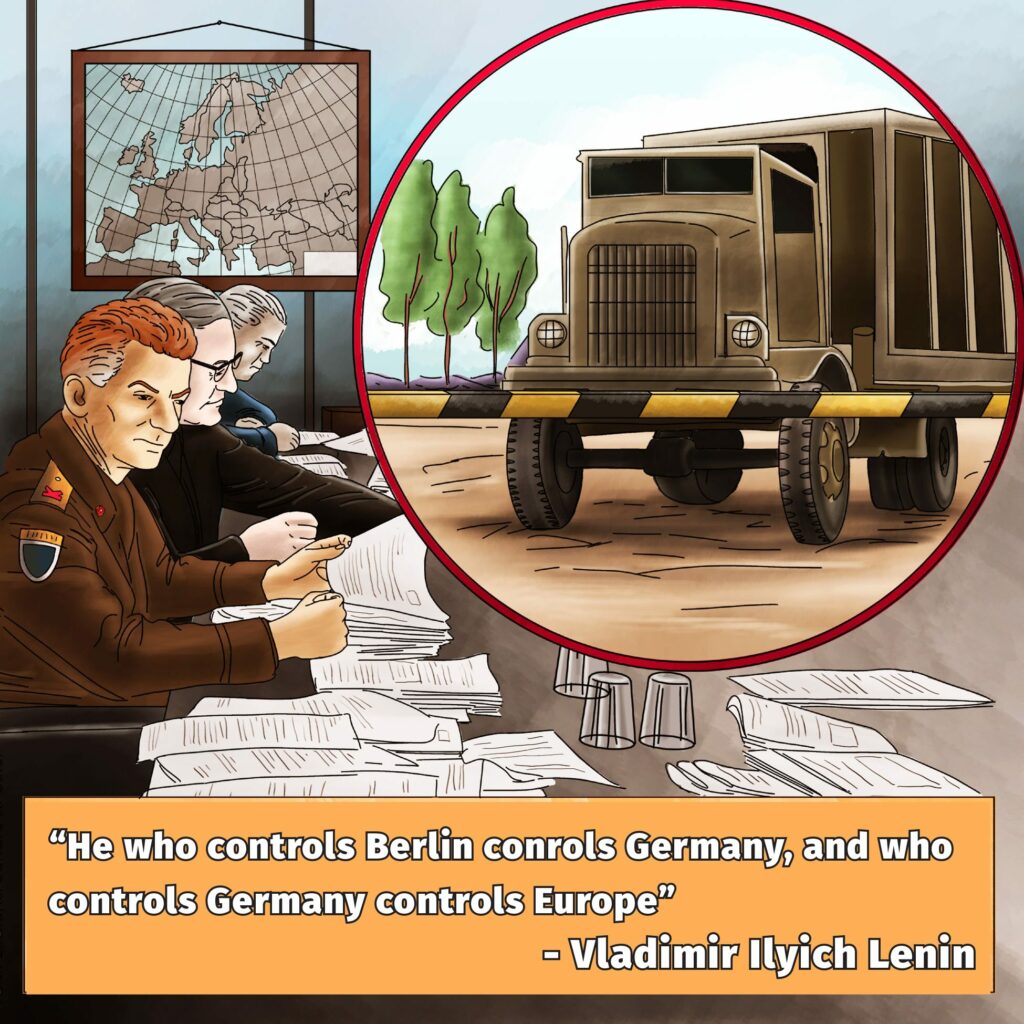
The Airlift
General Lucius D. Clay, Commander of the U.S. Forces in Europe, decided to launch the Airlift, codenamed “Operation Vittles,” demonstrating the determination of the Western Allies to support West Berlin and uphold their commitment to the city's freedom and survival.
On June 26, 1948, the U.S. and Great Britain launched a massive humanitarian and logistical effort to sustain the people of West Berlin. Many doubted this extensive, intricate, and perilous undertaking could supply the city by air alone for any length of time.
On the first day of the airlift, American and British planes landed at Tempelhof and Gatow airports in West Berlin with fresh milk in glass bottles and bags of flour. They delivered 93 tons, far short of the minimum of 4,500 tons of vital supplies needed daily.
Hundreds of planes of all types and sizes, both military and civilian, were called into service from around the globe, and the airplanes became West Berlin’s only link to the outside world. To supply the city by air, the Western Allies flew within the bounds of the three 20-mile-wide air corridors through the Soviet-controlled airspace over East Germany. The northern and southern corridors were used for flights to Berlin, and the center corridor for return flights to the Western zones of Germany. Seasoned pilots used these vital routes to fly coal, food, raw materials, medicine, and all other supplies needed for a city of 2.5 million people.
The air traffic controllers had a challenging time coordinating up to 400 aircraft each day. On average, a flight landed or took off every three minutes. To keep the people of Berlin from starving, the airports had to remain open around the clock, regardless of weather conditions.

Full interactive story available for purchase, Wings of Freedom – The Story of The Berlin Airlift of the Culture to Color series.
Upon landing, the cargo planes had to be unloaded quickly. The Allied Forces trained Germans to work side by side with them to complete the meticulously orchestrated unloading tasks. Theirs was an astonishing level of cooperation, considering they had been fierce enemies only three years earlier!
But it was not food that made up the majority of supplies. To rebuild the economy and keep Berliners warm through the winter, the predominant cargo was coal, which constituted 65% of the total tonnage. The Airlift delivered a total of 1.5 million tons of coal to Berlin.

General Tunner
General William H. Tunner had arrived in Germany as the newly appointed commander of the American and British Airlift operation. His task was to organize and transform the hastily assembled humanitarian effort into a well-oiled machine.
From his experience organizing an airlift over the Himalayas, Tunner knew he needed to take drastic measures in coordinating the operation. He introduced new flight and landing protocols for the Berlin airfields. He made instrument flying mandatory, regardless of the weather conditions. Also, if a pilot missed his landing, he was not allowed a second attempt but would have to return to his base in West Germany. This prevented the backup of airplanes in holding patterns and ensured safer landing operations.
Tunner recognized the importance of reducing the turnaround time of the airplanes. After touchdown, a pilot had four minutes to park his plane. Refueling, unloading, and minor maintenance were then completed simultaneously. All procedures were timed perfectly to maximize the usage of the available airplanes and ground facilities.
“The actual operation of a successful Airlift is about as glamorous as drops of water on stone,” Tunner wrote in his memoir. “There’s no frenzy, no flap, just the inexorable process of getting the job done.”
All pilots were ordered to stay with their planes from landing until takeoff. Weather updates and information were brought directly to the aircraft during unloading, eliminating the crews' need to enter the terminal. Gen. Tunner also converted several trucks to mobile snack bars, staffed by charming Berlin women, allowing crews to obtain coffee, snacks, or other supplies without leaving the vicinity of their planes.
Under Gen. Tunner, dubbed “Willie, the Whip” for his unrelenting demand for precision, the Combined Airlift Task Force succeeded in optimizing the operation. New tonnage records were set almost every week, and at the height of the Airlift, an aircraft landed in Berlin every 63 seconds.

Gail Halvorsen – Changing Hearts from the Sky
One day, a young Air Force pilot, Lt. Gail S. Halvorsen, talked to some children at the airport fence. Before leaving, he pulled out two sticks of gum. The children divided the gum and even treasured the smell of the wrappers. Wanting to give them more, he promised to drop candy the next day, not at the fence but from the sky. Before leaving, a child asked how they would recognize him. With a smile, Halvorsen replied, “I'll wiggle my wings.”
To keep his promise, Halvorsen crafted parachutes using his handkerchiefs and attached candy. As he approached Tempelhof airport the following day, he rocked his wings, and his crew dropped the small candy parachutes. Little did he know this simple gesture would become a cherished symbol of hope during those dark days.
Soon, many other pilots participated, and candy parachutes were assembled by school classes and church groups across the U.S. and sent to Germany for the children of Berlin.
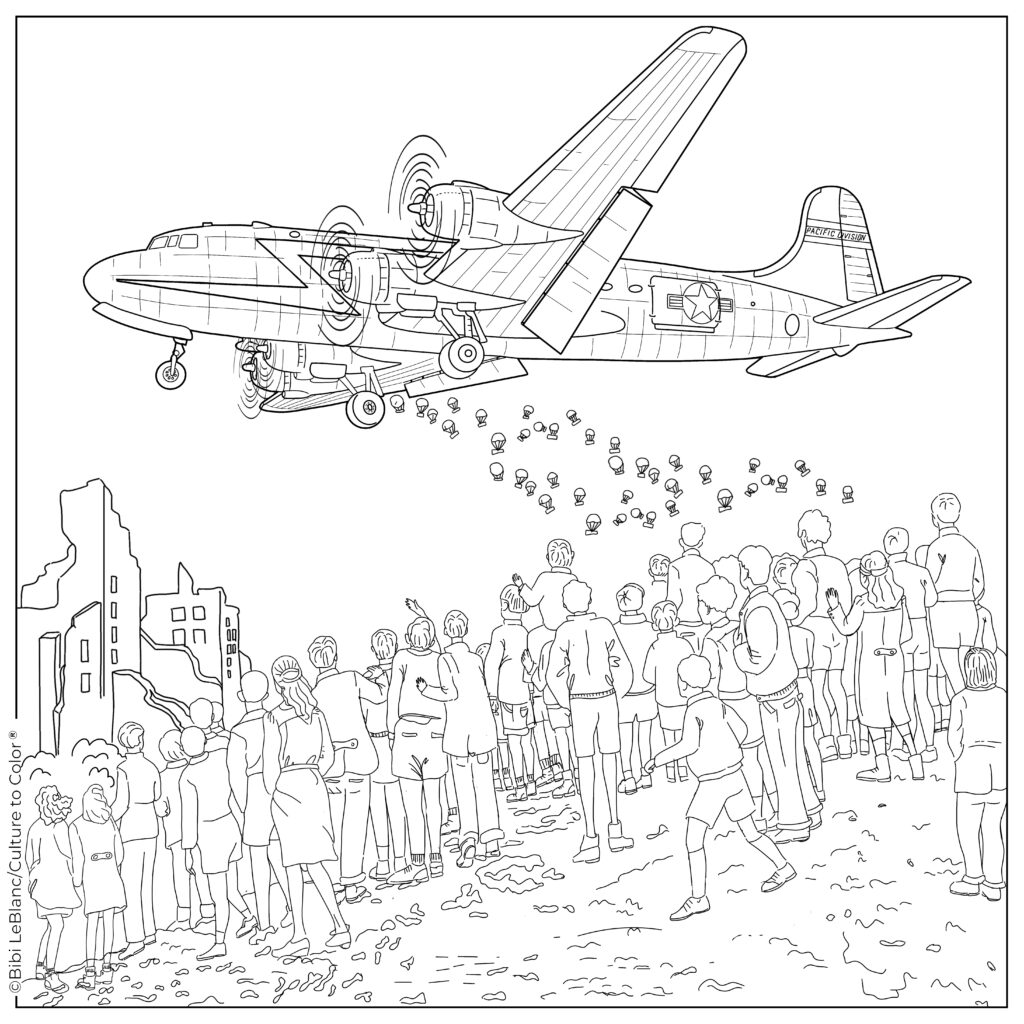
The End of the Blockade
As 1948 transitioned into 1949, the rumble of engines in the skies over Berlin continued. Against all odds and challenges, the Airlift persisted, proving the western Allies could sustain Berlin indefinitely.
Realizing the Western Allies were not going to abandon Berlin, the Soviets lifted the blockade on May 12, 1949. The Autobahn, railways and canals were reopened. After 10 months and 16 days of intense standoff with the Soviet Union, the end of the Blockade marked a pivotal chapter of the Cold War!
Despite what many had believed impossible, Berlin was supplied solely by air from June 26, 1948, until May 12, 1949, with airplanes landing every three minutes day and night for almost a year!
Conclusion
The hardships the Germans and Western Allies shared in the face of the Blockade transformed the once strained relations into friendships. The newfound mutual respect became the cornerstone for rebuilding West Berlin and West Germany and stabilizing post-WWII Western Europe.
The candy drops created a tangible connection between the children of Berlin and the pilots in the planes. Once meaning danger, the planes now represented goodwill and friendship and served as a powerful catalyst for changing the hearts and minds of young and old alike.
This year, as we celebrate the 75th anniversary of the Berlin Airlift, the story of Berlin’s citizens and the Western Allies resonates through time. It illustrates how communication and cooperation can overcome even the darkest hours of history. Its legacy teaches us that when we stand together, we can bridge gaps and transform enmity into friendship.
“The blockade of West Berlin ended on May 12, 1949. This was not just a victory for the Allied Forces, but a victory shared with all of the citizens of Berlin. These were citizens who braved the hardships, the hunger, and the cold. These were the citizens who toiled long hours unloading aircraft and making new runways. Berlin was no longer the defeated, demoralized capital of a vanquished foe. The new West Berlin was a city, emerged from the rubble, unified, and proud of its peoples' accomplishments. Berliners had earned their right to celebrate and stand among the free people of the world.”
National Museum of the United States Air Force
This story also serves as a reminder that each of us can show we care with even a small gesture, just as Gail Halvorsen, the Candy Pilot, did with two sticks of gum. You never know the impact you might have in shaping the world around you!
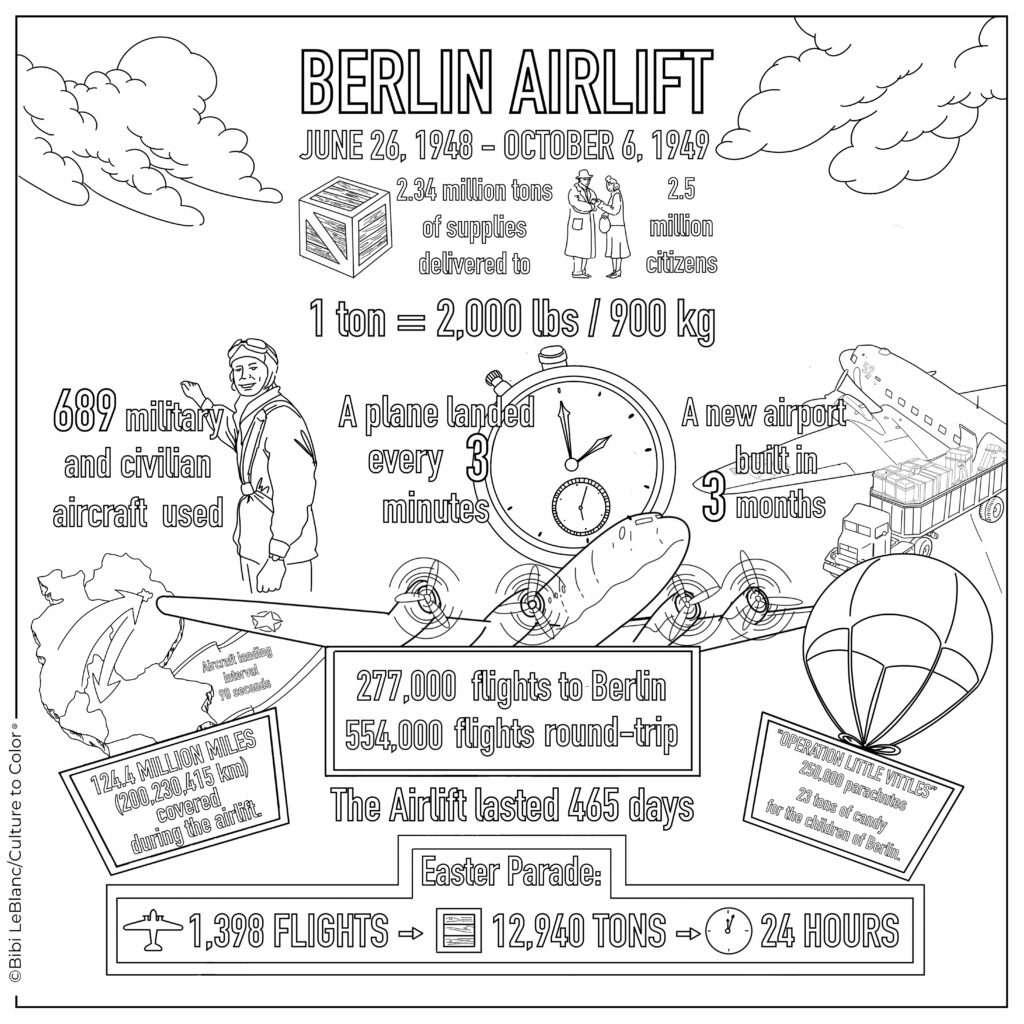
Full interactive story available for purchase, Wings of Freedom – The Story of The Berlin Airlift of the Culture to Color series.


